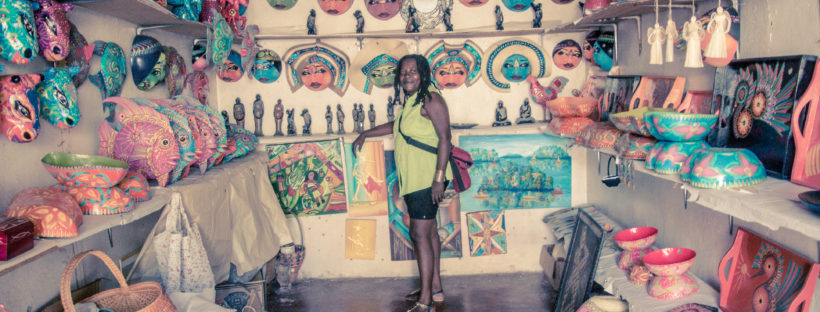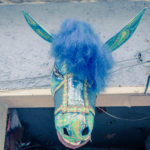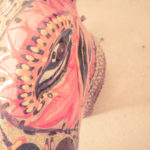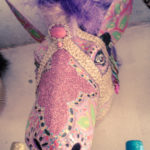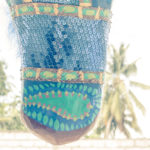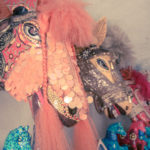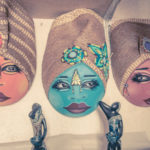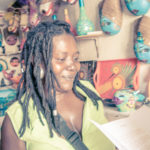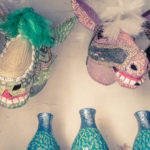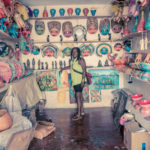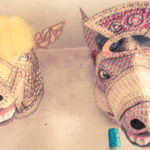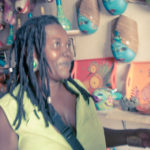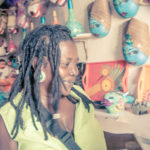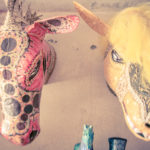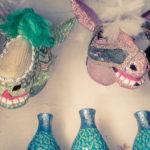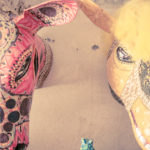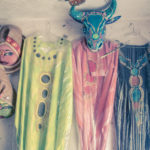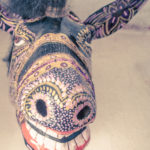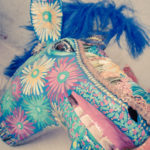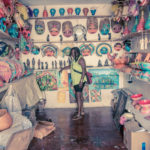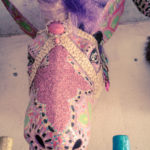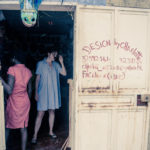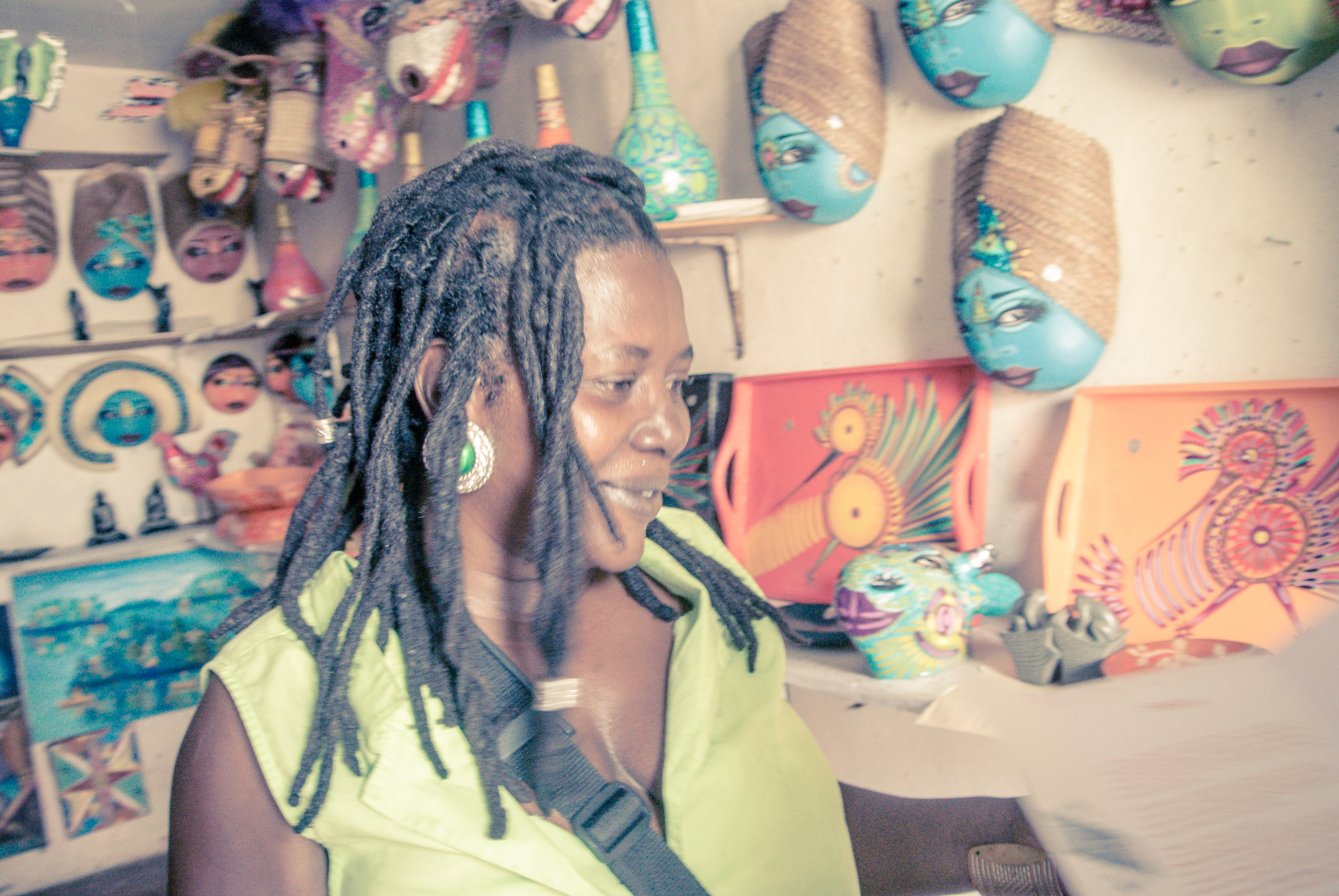
After the earthquake she managed a tent city in Jacmel. One of the only women that we know of to hold this difficult position. You can read about her experiences here and watch her here.
Madame Charles, is one of the few female artisans in Haiti. She develops her livelihood as a painter of vibrant Jacmellian papier-mâché . She has also become a mentor to other young women thinking about a career in the arts. A mother to one daughter, she represents women empowerment and encourages more Haitian women to become more entrepreneurial.
About the Horses: Artisanally crafted, these horses are carefully hand-painted and embellishes with an array of materials found in local marketplaces. Embellishments range from sequins, rhinestones, sisal rope, woven banana fronds, wigs, goat hair, glitter and anything else that can be foraged locally in craft stalls in downtown Jacmel. If you would like to purchase one of Madame Charlotte’s chevals (horses) simply email with her US friend, Melissa Schilling (melissa@projecthopeart.org) to make arrangements. Her horses range from $250-350 and support women’s rights arts programming.
About Jacmel: Jacmel is a commune in southern Haiti founded by the Spanish in 1504 and repopulated by the French in 1698. It is the capital of the department of Sud-Est and has an estimated population of 40,000, while the municipality (commune) of Jacmel had a population of 137,966 at the 2003 Census. The town’s name is derived from its indigenous Taíno name of Yaquimel.
The mansions of Jacmel with their cast-iron furnishings would later come to influence the home structure of much of New Orleans. Today, many of these homes are now artisan shops that sell vibrant handicrafts, papier-mâché masks and carved-wood animal figures. In recent years, efforts have been made to revitalize the once flourishing cigar and coffee industries. The town is a popular tourist destination in Haiti due to its relative tranquility and distance from the political turmoil that plagues Port-au-Prince.
The city has well-preserved historical French colonial architecture that dates back from the early nineteenth century and has little changed. The town has been tentatively accepted as a World Heritage site and UNESCO reports that it has sustained damage in the 2010 Haiti earthquake.
About Papier-mâché: French for “chewed paper”, is a composite material consisting of paper pieces or pulp, sometimes reinforced with textiles, bound with an adhesive, such as glue, starch, or wallpaper paste. For the paper strips method, the paper is cut or torn into strips, and soaked in the paste until saturated. The saturated pieces are then placed onto the surface and allowed to dry slowly.
The strips may be placed on an armature, or skeleton, often of wire mesh over a structural frame, or they can be placed on an object to create a cast. Oil or grease can be used as a release agent if needed. Once dried, the resulting material can be cut, sanded and/or painted, and waterproofed by painting with a suitable water-repelling paint. Before painting any product of papier-mâché, the glue must be fully dried, otherwise mold will form and the product will rot from the inside out.
In ancient Egypt, coffins and death masks were often made from cartonnage — layers of papyrus or linen covered with plaster.In Persia and Kashmir, papier-mâché has been used to manufacture small painted boxes, trays, étagères and cases. Japan and China also produced laminated paper articles using papier-mâché. In Japan and India, papier-mâché was used to add decorative elements to armor and shields.
